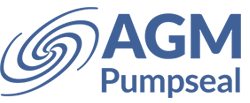Water Hygiene

Legionella Control – Client Responsibilities
Under the Health and Safety at Work Act 1974 (HSWA), Control of Substances Hazardous to Health Regulations 2002 (COSHH) ACoP L8, and The Management of Health and Safety at Work Regulations 1999 (MHSWR) an employer or person in control of a premises has a legal duty to ensure the safety of staff, visitors and people in the vicinity of their property.
One of the duties under these regulations is to prevent or control the risk of proliferation and exposure to Legionella.
Legionnaires’ Disease, the control of Legionella bacteria in water systems, Approved Code of Practice and guidance (ACoP) L8 provides advice on the requirements of the HSWA and COSHH. The code provides practical advice on how to comply with the law. By following the advice you will be meeting the minimum requirements of your duties with respect to those specific matters on which the code gives advice.
Legionella bacteria exist naturally in common water systems such as rivers and lakes, usually in low numbers. It is when they enter manufactured systems that the potential for proliferation and exposure increases unless correctly managed.
Risk Assessment
In order that the risks can be identified, a suitable and sufficient assessment should be undertaken by a competent person. The assessment should include the following;
- Management responsibilities, including identifying the Duty Holder, Responsible Person and the competent person who carried out the assessment and any other relevant parties such as maintenance contractor.
- Lines of communication between all parties
- A description of the system including a schematic diagram
- Any potential risks
- Any control systems currently in place
- Monitoring, inspection and maintenance procedures
- Records of the monitoring results and inspections
- Duty holders should arrange to review the assessment regularly and specifically when there is reason to suspect it is no longer valid. An indication of when to review the assessment and what to consider should be recorded and this may result from, e.g.:
– a change to the water system or its use;
– a change to the use of the building where the system is installed;
– new information available about risks or control measures;
– results of checks that indicate control measures are no longer effective;
– changes to key personnel;
– a case of legionnaires’ disease/legionellosis associated with the system.
Controlled Schemes / HSE
HSE leaflet INDG458 on Legionnaires’ disease is a brief guide containing useful information. This includes ‘What is Legionnaires’ disease?’, ‘Where are legionella bacteria found?’, ‘Are there legionella risks in my workplace?’, ‘What are my duties?’, ‘How do I identify and assess sources of risk?’, ‘How do I manage the risk?’, ‘How do I prevent or control the risk?’ and ‘What records do I need to keep?’.
Record keeping
Monitoring and Inspection requirements will include a number of regular tasks.
Records of who the Duty Holder, Responsible Person and who conducted the risk assessment should be retained for at least two years after they are no longer current, together with the risk assessment and details of the control scheme. Results of tests and inspections carried out under the control scheme should be held for at least five years.
Duty holder / Responsible person
The Duty Holder should appoint a Responsible Person to manage the risks from legionella bacteria. They should possess sufficient authority, competence and knowledge to ensure all operational procedures are carried out in a timely and effective manner.
Items covered by assessment
- Specification of a Complete Water Management Plan
- L8 Compliant Legionella Risk Assessments
- Initial Inspection and Condition Surveys
- Preparation of Control Measures to Manage the Risk
- Planned Monitoring and Inspection site visits
- Water Treatment
- Water Sampling and Analysis
- Water Tank Cleaning and Disinfection
- Water Tank Installations, Replacements and Upgrades
- Water System Maintenance and Repair
- Calorifier and Boiler De-scaling
- De-scaling of Shower Heads and Taps
- Pipe work Reconfiguration and Replacement
- Site Log Books
- Electronic Web Based Database Record Keeping
- Staff Training and Support
- Insulation of Water Tanks and Pipe work
- Installation and servicing of thermostatic mixing valves



